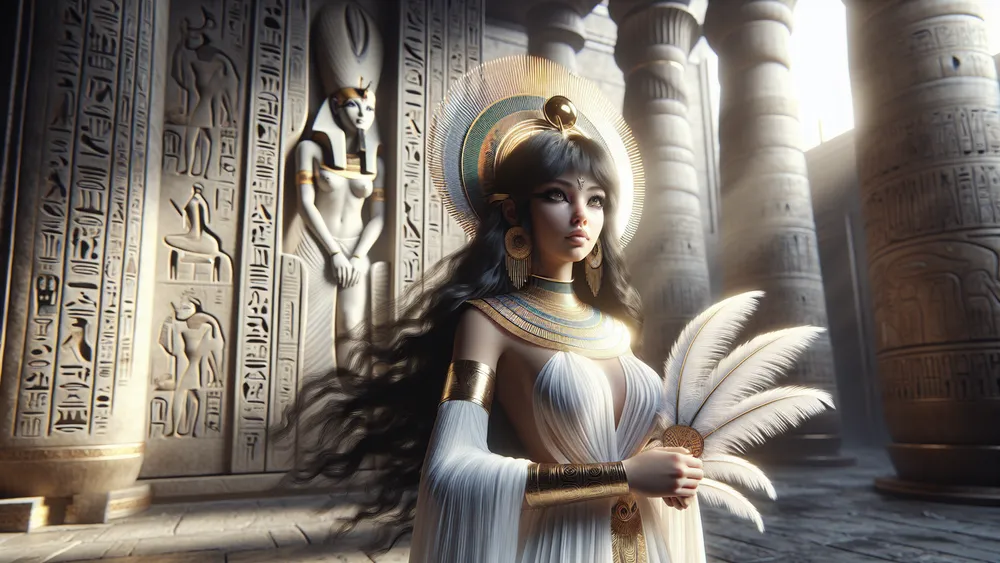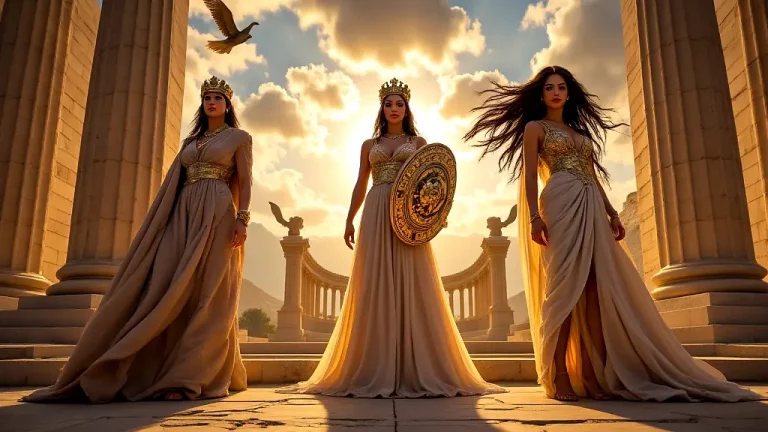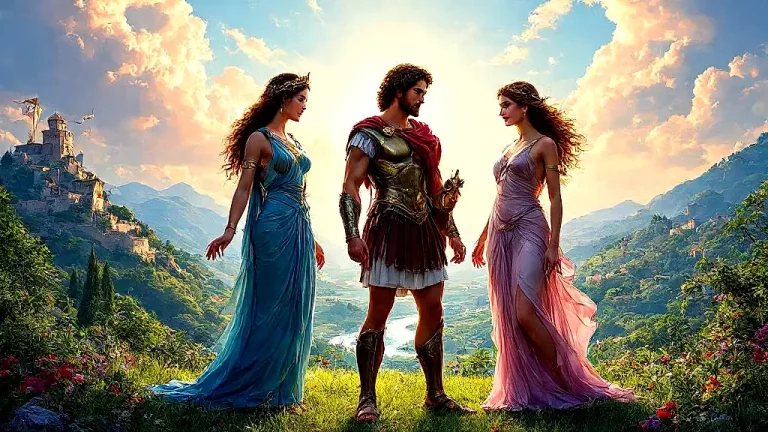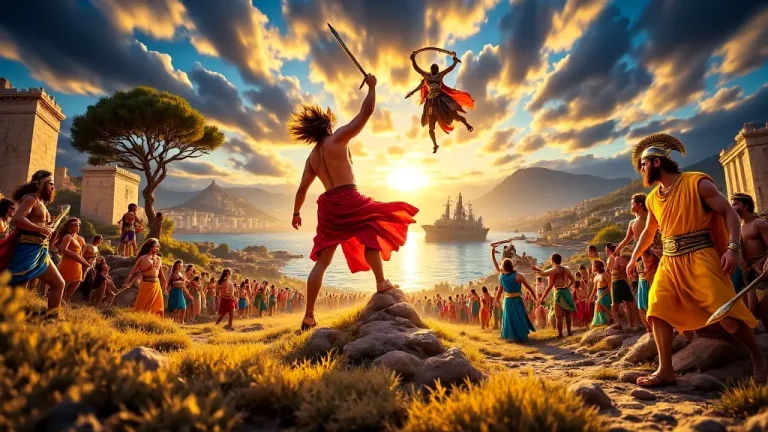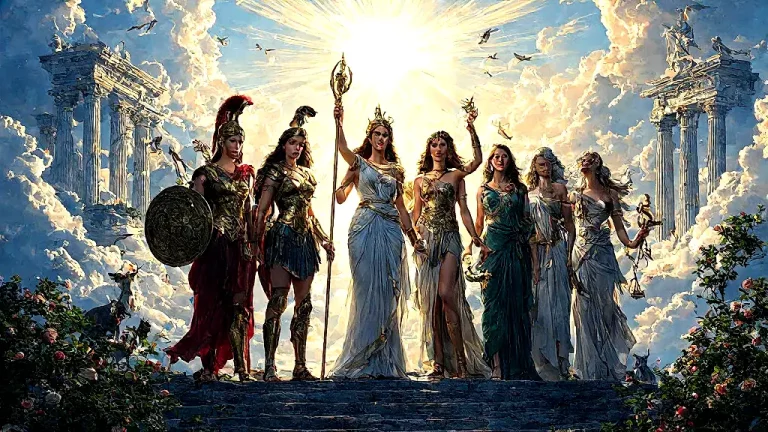Maat: Egyptian Goddess Of Truth And Justice
Maat, the ancient Egyptian goddess of truth, justice, and cosmic order, is a big deal in Egyptian mythology. She’s all about harmony and balance, and her principles keep the universe running smoothly. People didn’t just see her as a myth; she influenced law, governance, and everyday life. Her ideas shaped how ancient Egyptians thought about right and wrong.
Key Points:
- Maat is the Egyptian goddess of truth, justice, and cosmic order.
- She influenced law, governance, and everyday life in ancient Egypt.
- Maat’s symbols include the feather of truth and the scales of justice.
- Her principles were central to ancient Egyptian law and governance.
- Maat’s legacy is still seen today in art, jewelry, and modern society.
- Priests and scribes played key roles in upholding Maat’s principles.
- Maat’s influence extended to beliefs about the afterlife and worship practices.
This blog post dives into where Maat comes from, what she symbolizes, how she impacted society, and why she still matters today. It’s a deep look at why Maat is so important, both back then and now.
The Origins of Maat
To get why Maat matters, we gotta look at where she comes from and how her role changes over time in ancient Egypt. So, let’s dive into her historical background and see her spot in mythology.
Historical Background
Maat shows up in ancient Egyptian texts way back during the Old Kingdom period (around 2686–2181 BCE). You can find her mentioned in the Pyramid Texts, which are these old religious spells carved on pyramid walls. At first, she’s all about keeping the universe in balance. But as time goes on, her role gets bigger. By the Middle Kingdom (about 2055–1650 BCE), she’s super important to kingship.
Pharaohs are seen as the ones who uphold Maat, making sure everything stays just and harmonious. This idea keeps growing into the New Kingdom (around 1550–1070 BCE), where Maat’s principles start shaping laws and governance. She’s not just a myth anymore; she’s a guiding principle for everyone, from rulers to regular folks, stressing the need to live by truth and justice.
- Pyramid Texts: Early religious texts where Maat is first mentioned.
- Middle Kingdom: Period when Maat became central to kingship.
- New Kingdom: Time when Maat’s principles influenced laws and governance.
- Pharaohs: Seen as upholders of Maat, ensuring justice and harmony.
- Living in Maat: Concept emphasizing living according to truth and justice.
Maat’s evolution from a concept for balancing the universe during the Old Kingdom to a guiding principle for laws and governance in the New Kingdom demonstrates her increasing significance in ancient Egyptian society.
Maat in Egyptian Mythology
Maat is a big deal among the Egyptian gods. She’s often seen as the daughter of the sun god Ra, which shows just how important she is for keeping things in order. She’s not just a goddess; she’s also the idea of truth, balance, order, harmony, law, morality, and justice.
In the group of gods, Maat is the one who stops the universe from falling into chaos. One key story about her is the Weighing of the Heart ceremony. This is a big part of what Egyptians believe about the afterlife.
In this story, they weigh a dead person’s heart against Maat’s feather of truth to see what happens to them after they die. If the heart is lighter than the feather, it means they lived by Maat’s rules and get to go to the afterlife. Another story shows Maat traveling with Ra across the sky every day.
She helps him fight off chaos, making sure night turns into day.
- Daughter of Ra: Emphasizes her role in maintaining cosmic order.
- Weighing of the Heart: Ceremony determining the deceased’s fate in the afterlife.
- Feather of Truth: Symbol used to measure one’s adherence to Maat’s principles.
- Daily Journey with Ra: Maat assists Ra in combating chaos, ensuring cosmic balance.
Symbolism and Iconography
So, now that we know about Maat’s role in mythology, let’s dive into her symbols and how she’s shown in art. We’ll look at the key symbols and see how she’s depicted in ancient Egyptian art.
Symbols Associated with Maat
Maat’s symbols are pretty cool and interesting. You’ve got the feather of truth and the scales of justice. The feather, usually an ostrich one, stands for truth, balance, and order. In ancient Egypt, they used this feather in the Weighing of the Heart ceremony. They believed it helped decide if someone could enter the afterlife. The scales? They’re all about justice and fairness.
They measured the heart against the feather to see if a person lived by Maat’s rules. These symbols weren’t just for show. They were part of everyday life, reminding everyone to live truthfully and justly.
- Feather of Truth: Used in the Weighing of the Heart ceremony.
- Scales of Justice: Symbolize fairness and balance.
- Ostrich Feather: Specific type of feather associated with Maat.
- Legal and Moral Fabric: Embedded in societal values and laws.
Maat’s symbols, like the feather of truth and the scales of justice, were embedded in societal values and laws, reminding everyone to live truthfully and fairly.
Depictions of Maat in Art
You know, in ancient Egyptian art, Maat usually shows up as a woman with an ostrich feather on her head. That feather stands for truth and justice. Sometimes, she even has wings, which really highlights her role in keeping things balanced. You can find her in all sorts of art forms like reliefs, statues, and paintings.
She’s often either sitting or standing, holding a scepter or an ankh – those are symbols of power and life. But there are variations too. The details of her clothes and the specific scenes she’s in, like the Weighing of the Heart ceremony, can change. These artistic touches show just how important she was in both religious and everyday life.
| Artistic Representation | Common Features | Variations |
|---|---|---|
| Reliefs | Feather on head, seated or standing posture | Details of attire, context of depiction |
| Statues | Holding scepter or ankh | Size and material used |
| Paintings | Wings, cosmic balance theme | Color schemes, accompanying deities |
Maat’s Influence on Egyptian Society
So, we’ve looked at Maat’s symbols and how she’s shown in art. Now, let’s see how her ideas really shaped ancient Egyptian life. We’re diving into how Maat’s principles affected their laws, everyday life, and even their thoughts about the afterlife.
Role in Law and Governance
Maat’s principles are at the heart of ancient Egyptian law. They shape how justice and order work. “Living in Maat” means sticking to truth, balance, and doing what’s right. Everyone, from rulers to regular folks, needs to follow this. Pharaohs, seen as Maat’s earthly reps, make sure her principles keep the nation stable and prosperous. Judges and officials? They aim for fair judgments based on Maat’s ideals.
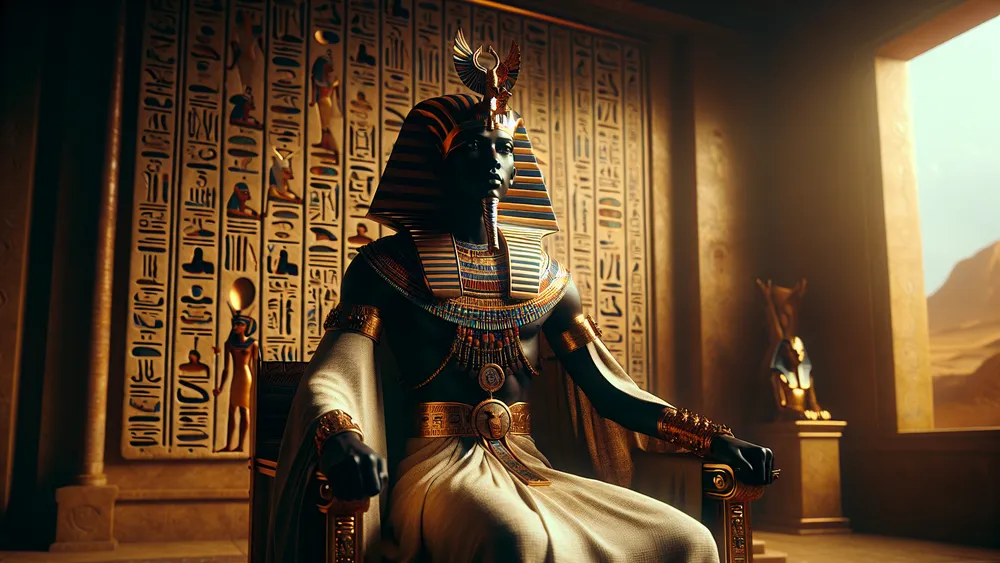
This isn’t just about laws; it’s a moral thing too. It affects how people behave and treat each other. Living in Maat goes beyond courts, promoting honesty, integrity, and harmony in the community.
- Pharaohs as enforcers of Maat: They make sure laws fit Maat’s principles.
- Judicial system: Judges swear to uphold Maat.
- Moral conduct: People are encouraged to live truthfully and justly.
- Social harmony: Promoted through following Maat’s values.
Living in Maat influences every aspect of ancient Egyptian society, from legal proceedings to personal conduct and societal harmony.
Maat and the Afterlife
In ancient Egyptian belief, Maat is super important in the afterlife. You see this especially with the 42 Negative Confessions and the weighing of the heart ceremony. The 42 Negative Confessions are these statements the dead person makes before 42 divine judges. Each judge stands for a different part of Maat. These confessions aren’t about admitting guilt.
Instead, they’re like saying, “I haven’t stolen” or “I haven’t lied”, showing they lived by Maat’s rules. Then there’s the weighing of the heart ceremony. Here, they weigh the person’s heart against the feather of Maat. This feather stands for truth and justice. If the heart is lighter or the same weight as the feather, it means they lived a good life and get to go to the afterlife.
But if the heart is heavier, it means they did wrong things, and Ammit, a scary deity, eats their soul.
- 42 Negative Confessions: Affirmations like “I have not committed murder”.
- Divine judges: Each judge represents a different attribute of Maat.
- Feather of Maat: Symbolizes truth and justice.
- Ammit: Deity that devours unworthy souls.
Worship and Temples
So, we’ve talked about how Maat shapes law and the afterlife, right? Now, let’s dive into where and how people actually worship her in ancient Egypt.
Temples Dedicated to Maat
Temples for Maat are super important in ancient Egypt. You find some of the big ones in Karnak and Deir el-Medina. These places aren’t just for praying; they also handle legal stuff and admin work, showing how Maat keeps everything in order. They do daily offerings and special ceremonial recitations to call on Maat and keep the universe balanced.
Priests do purification rites and give food, incense, and libations to honor her. Scribes write down all these ceremonies, making sure everyone sticks to Maat’s rules in both spiritual and everyday life.
- Karnak Temple: In Luxor, it has a special spot for Maat.
- Deir el-Medina: A village for tomb workers, also has a Maat temple.
- Daily Offerings: They give food, incense, and drinks.
- Purification Rites: Priests do these to stay spiritually clean.
- Ceremonial Recitations: They say special prayers and hymns to call Maat.
Priests and Scribes of Maat
Priests of Maat, they play a big role in keeping truth and justice alive in ancient Egypt. They do rituals and ceremonies to honor Maat, making sure everything stays in order. These priests also work as judges and legal advisors. They use Maat’s principles to solve disputes and make sure justice is served. Scribes, on the other hand, are super important too.
They write down all the legal stuff and religious rituals. They keep records of decrees, legal texts, and hymns, making sure Maat’s ideas spread throughout the kingdom. The scribes’ work is crucial for running the state smoothly. They provide written records that uphold the norms set by Maat.
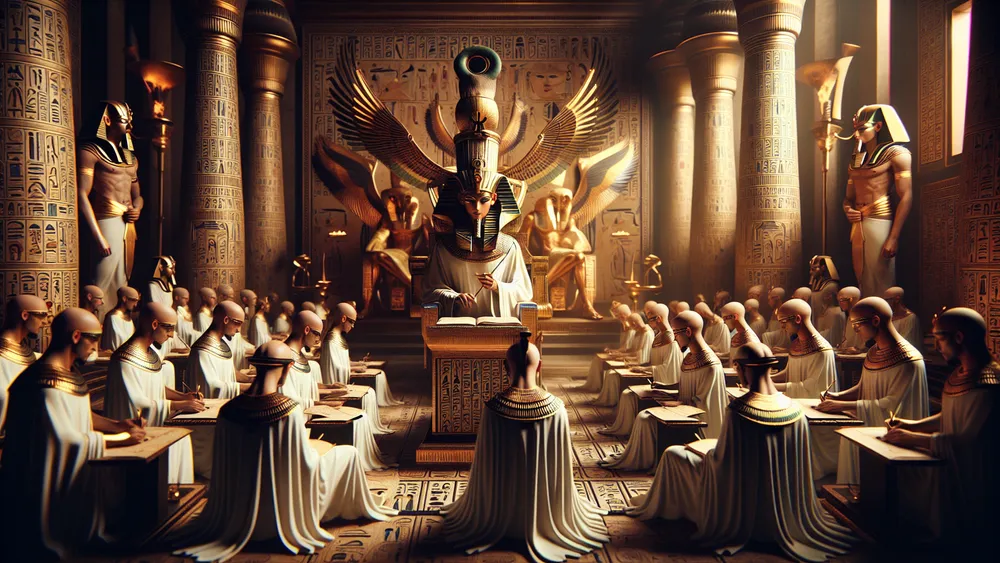
- Judicial Role of Priests: Priests often serve as judges in legal matters.
- Documentation by Scribes: Scribes record legal texts and religious hymns.
- Rituals and Ceremonies: Priests conduct daily rituals to honor Maat.
- Legal Interpretation: Priests interpret laws based on Maat’s principles.
- Administrative Functions: Scribes maintain records essential for governance.
Maat in Modern Culture
So, moving from ancient times to now, you can still see Maat’s influence in different parts of modern life. Let’s dive in and see how her legacy sticks around today.
Maat in Contemporary Art and Jewelry
You see Maat popping up a lot in modern art and jewelry. The feather of truth and the scales of justice are everywhere. Artists love using these symbols in their paintings, sculptures, and even digital art. They just can’t get enough of it. And jewelry? Oh, it’s super popular. People wear necklaces, bracelets, and rings with Maat’s symbols all the time.
It’s not just about looking good; these pieces mean something special. They stand for truth, balance, and moral integrity. So, when you see Maat’s symbols in art or jewelry, it’s like a little reminder of those timeless values.
- Feather of Truth: You often see it in pendants and earrings.
- Scales of Justice: These show up in modern sculptures and paintings.
- Maat’s Image: Her depictions are popular in various art forms.
- Symbolism: They stand for values like truth, balance, and justice.
Maat’s Legacy in Modern Society
Maat’s principles of truth, justice, and balance are still a big deal today. You see them in our legal systems, where fairness is key. Modern courts try hard to be fair, just like Maat influenced ancient Egyptian law. Plus, balance matters a lot now, whether we’re talking about the environment or social issues.
When people talk about justice today, they often bring up Maat to stress how important it is to act right and be moral. Her ideas are the backbone of talks about human rights, social justice, and sharing resources fairly. They still matter a lot.
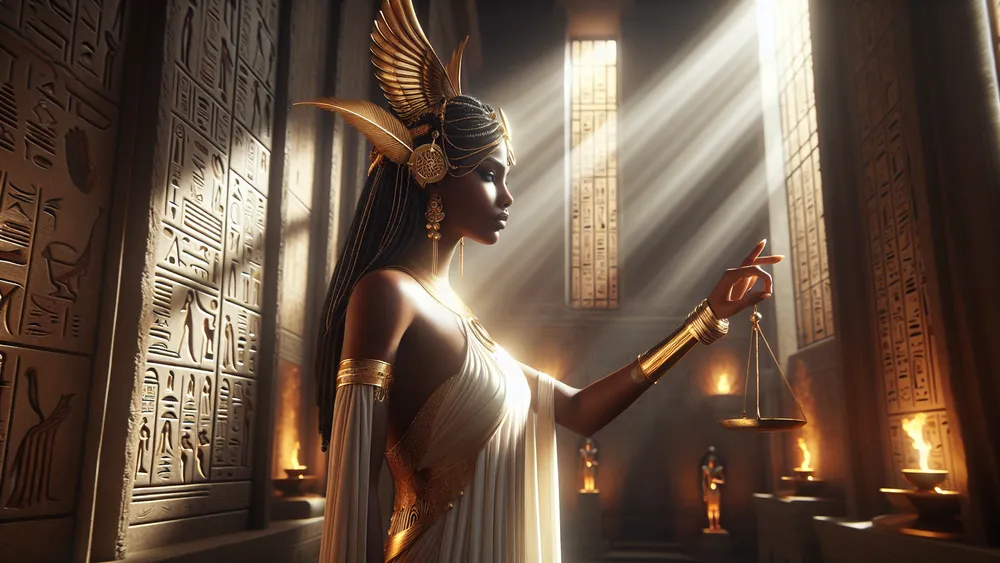
- Human Rights: Maat’s focus on justice fits well with today’s human rights ideas.
- Environmental Sustainability: Balance is super important when we talk about being green.
- Social Equality: Her legacy pushes us to fight for social justice and equality.
- Ethical Conduct: Her principles remind us to be ethical in everything we do.
Pantheon of All the Egyptian Mythology Gods
The Egyptian pantheon? It’s huge. There are tons of gods and goddesses, each with their own special thing. If you want to dive in, check out this list of all the Egyptian gods. It’s got all the details on the big ones they worshipped back in the day.
FAQs
1. Who was Maat in ancient Egyptian mythology?
Maat, in ancient Egyptian mythology, is the goddess of truth, justice, and cosmic order.
2. What symbols are associated with Maat?
So, Maat has some pretty cool symbols. You’ve got the feather of truth and then there’s the scales of justice.
3. How did Maat influence ancient Egyptian law?
Maat shapes ancient Egyptian law by being the core idea of truth, balance, and justice. It guides how they make legal decisions and run the government.
4. What is the significance of the 42 Negative Confessions?
The 42 Negative Confessions are super important because they act like a moral checklist. The deceased has to affirm they haven’t broken any of these rules to get a good judgment in the afterlife.

